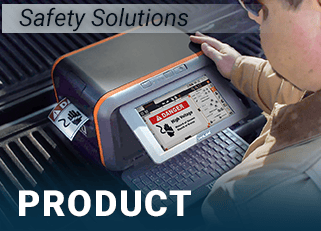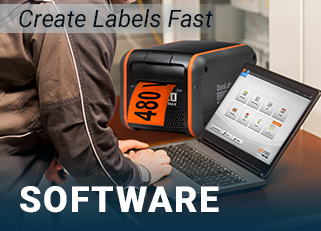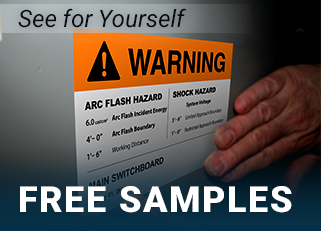OSHA Sound Levels
03
February,
2023
5 MINUTE READ

What is noise? Is all noise bad? Where does noise come from?
Vibrations detected by the human ear are called "sound." If the sound is unwanted it is called "noise." All types of vibrations cause sound. The controlled vibration of our vocal cords results in speech. The amplified vibration of a string results in loud music. Noise, loud sounds, and vibration can be harmful when it is at a high level, or if exposure to it continues for a long time.
Mechanical vibration causes pressure waves in air, which we hear as sound. For example, the speaker in a stereo system has a paper cone that vibrates. As it vibrates it creates pressure waves in the air. The bigger the pressure wave, the greater the sound intensity. That's why louder sounds can damage hearing.
Imagine you are at a beach and small ocean waves are gently rolling onto the shore. You can stand in the water and it has little effect on you. Then the waves become larger, and it becomes difficult to stand. The waves tend to push you over. A short time later, large storm-driven waves arrive. These waves have more energy and power, and easily knock you over, roll you around, and can result in serious injury. Water waves are like the pressure waves in the air that we call sound. The larger the wave, the more energy it has, making it more dangerous.
Why Are OSHA Sound Levels Important?
OSHA sound levels establish limits a person's exposure to sound in the workplace. When sound exceeds the established OSHA sound levels, either temporary or permanent physical damage is likely to occur.
Hearing loss caused by exposure to high sound levels cannot be corrected by surgery. Hearing loss is permanent and while a hearing aid helps amplify sound, it is still limiting and cannot replace your natural hearing loss entirely. Even a short term exposure to loud sounds can result in a temporary reduction in the ability to hear well, or produce a ringing in the ears. This may clear up in a few minutes, but repeated exposures can result in permanent hearing loss or tinnitus. The effects of even a partial hearing loss can be significant. It may interfere with your ability to enjoy social activities or play with your children or grandchildren. It can even lead to psychological and social isolation.
Loud noises also cause physical and psychological stress. They keep us on edge, reduce our productivity, and interfere with communication. We get tired quicker and make more mistakes because the noise makes it difficult to concentrate and communicate.
How Loud Is Too Loud?
Sound is measured in decibels. The decibel scale that is used is the A-weighted sound level (dBA) because A-weighted sound levels closely match our perception of sound. Also, the decibel scale is logarithmic. This means that a small change in decibels corresponds to a large change in the actual sound energy, and thus a significant increase in the potential hearing damage.
The OSHA sound levels are legal limits on exposure to noise in the workplace. They are based on a time-weighted average over an eight hour day. For general industry, the OSHA permissible exposure limit (PEL) is 85 dBA for an eight hour day. For construction, the limit is 90 dBA per eight hour day.
If the noise level increases, the amount of time someone can be exposed to that noise decreases. OSHA bases the exposure time on an exchange rate of 5 dBA. This means that an increase in noise of 5 dBA cuts the amount of time a person can be exposed to the noise in half.
If noise exposure exceeds the OSHA PEL the employer must implement a Hearing Conservation Program. This requires employers to:
- measure noise levels
- provide free annual hearing exams
- provide free hearing protection
- provide training
- conduct evaluations of the adequacy of the hearing protectors in use
How Can You Tell If Workplace Noise Is A Problem?
How can you tell if noise is a problem in your workplace? There are three signs you can look for. Workplace noise may be a problem if:
- You have ringing in your ears after you leave work.
- You need to shout to be heard by someone an arm's length away or less.
- You have a temporary hearing loss when leaving work, such as your ears feeling "stuffy."
How Can Noise Be Reduced To Less Than The OSHA Sound Levels?
A three-level hierarchy of controls is used to address safety hazards, and this approach also applies to noise that exceeds OSHA sound levels. It starts with engineering controls, then administrative controls, and finally personal protective equipment.
Engineering Controls
Engineering controls involve either eliminating the source of the noise or controlling it such that it is reduced below the OSHA sound level limits. For example, an older machine might generate a lot of noise, but it can be replaced by a new machine that runs quietly. Or the process can be changed such that the noisy machine is no longer needed. Engineering controls are also used to:
- Prevent the propagation of noise through the use of barriers and sound-absorbing materials.
- Prevent the amplification and reverberation of noise.
- Isolate noise sources (place noisy equipment in a separate room, for example).
- Change equipment mounting designs to reduce vibration.
- Improve equipment maintenance.
- Improved lubrication can reduce noise.
- Replace worn parts and components.
- Maintain proper alignment and tolerances.
Administrative Controls
Administrative controls involve changing how the work is done to reduce exposure to noise that exceeds the OSHA sound levels. Examples of administrative controls include:
- Work that requires using noisy machines can be scheduled to be done at night when fewer workers are present.
- Employees can be rotated so that any one person's exposure to high noise levels is limited to short periods.
- Providing quiet rooms where employees can go to get relief from noise.
- Moving noisy equipment so that is physically further away from most workers. In open space, every doubling of the distance from noise sources reduces the noise level by 6 dBA.
Personal Protective Equipment
When neither engineering controls nor administrative controls can reduce noise levels below the prescribed OSHA sound levels, then personal protective equipment (PPE) must be used. Also, a hearing conservation program must be implemented. The goal is to prevent occupational hearing loss and equip employees so that they know when personal hearing protection equipment is needed, and they know how to use that PPE. OSHA describes the key elements of a hearing conservation program as:
- Workplace noise sampling. This includes individual, personal noise monitoring to identify which employees are at risk from exposure to high levels of noise.
- Workers must be provided with the results of their noise monitoring.
- Affected workers, or their authorized representatives, must have the opportunity to observe noise measurements being taken in areas that affect them.
- Conducting audiometric testing (hearing tests) of employees exposed to high levels of noise. The purpose is to have a professional evaluation of the health effects of noise on each worker's hearing.
- Following the completion of baseline and the first annual audiometric testing, follow up on employees who show a loss of hearing (standard threshold shift).
- Provide PPE for hearing protection:
- Ensure that workers have the hearing protection based upon each employee's fit, and the manufacturer's testing, such that the required level of protection is provided.
- Provide employees with training on how to properly use and care for the PPE.
- Evaluate the PPE's attenuation and effectiveness for the specific workplace noise.
- Provide affected employees with training and information so that they are aware of the hazards of excessive noise exposure.
Maintain records regarding monitoring and noise sampling, and provide workers with access to those records.
Warning Signs and Labels
High sound levels generally do not exist in all areas of a facility. That's why warning signs and labels are important. As someone approaches an area where there is a noise hazard, warning signs should alert them to the hazard, telling them to either keep out or wear the appropriate PPE. High noise areas may be anywhere... inside an enclosed room, outdoors, or in locations that have other hazards. The right tool for making the needed warning signs is a DuraLabel custom sign printer. With DuraLabel you'll have warning signs that address the specific hazard and needed PPE. You'll also have signs that withstand even harsh outdoor environments.
Call 888-326-9244 today for more information about the DuraLabel line of custom sign printers, and find out how much you can save when you purchase a DuraLabel kit.
RELATED RESOURCES

Protect Your Ears: Strategies to Prevent Work-Related Hearing Loss
It is no secret that noise plays a factor in day-to-day industrial manufacturing. Unfortunately, it is also ...
Read
Noise Reduction Rating
The Noise Reduction Rating (NRR) of hearing protection is a way for measuring the reduction in sound levels a ...
Read
OSHA Hearing Protection Requirements
The stats don't lie: According to the National Institute for Occupational Safety and Health, 22 million ...
Read.png)


